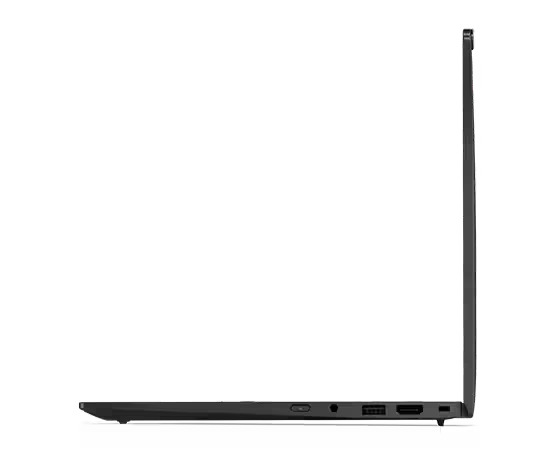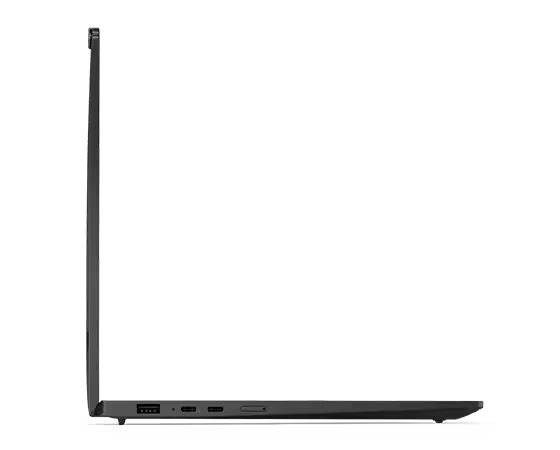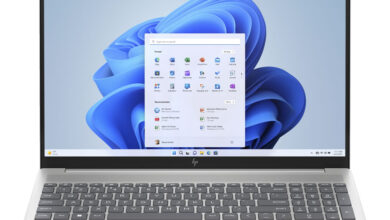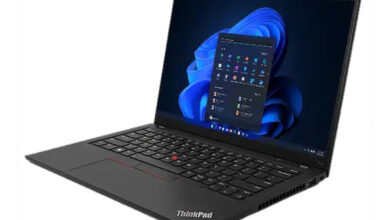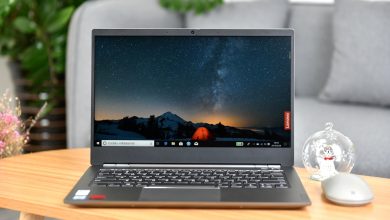Lenovo has a diversified range of laptops tailored to meet the diverse needs of consumers, with different lineups catering to various preferences. Today, we focus on Lenovo’s ThinkPad Carbon series, which is popular in the business segment for its slim profile, exceptional durability, potent performance, top-notch displays, and impressive battery life. In short, it has all the significant characteristics of a business notebook, addressing the key requirements of professionals.
The notebook we are going to review today is the 12th Generation of the Lenovo ThinkPad X1 Carbon, building upon the success of its predecessors. In the past, we have also reviewed the X1 Carbon Gen 7 and X1 Carbon Gen 10 models, both of which received favorable evaluations from us. In this latest model, we anticipate another positive outcome.
Key highlights of this notebook include the introduction of the new Intel Core Ultra 7 series CPU, which delivers powerful processing speed. Moreover, users can enjoy a visually stunning experience with the OLED display. Additionally, the latest LPDDR5x RAM, PCIe 4.0 SSD, and a larger 57WHr battery further elevate its performance and endurance. It is worth noting that while the internal components have undergone significant upgrades, the external appearance remains unchanged.
Lenovo ThinkPad X1 Carbon Gen 12: Specifications
| Screen | 14″ 2.8K (2880 x 1800), OLED, Anti-Glare, Anti Reflection, Anti Smudge, Non-Touch, HDR 500, 100%DCI-P3, 400 nits, 120Hz, Low Blue Light, ATNA40YK20-0 |
| Processor | Intel Core Ultra 7 155H (E-cores up to 3.80 GHz P-cores up to 4.80 GHz) |
| Wireless Connection | Intel Wi-Fi 6E AX211 2×2 AX vPro & Bluetooth 5.1 (Windows 10) or Bluetooth 5.3 (Windows 11) |
| Graphics card | Intel Arc Graphics |
| Memory | 32 GB LPDDR5X-6400MHz (Soldered) |
| Storage | 2 TB SSD M.2 2280 PCIe Gen4 Performance TLC Opal, manufactured by Samsung |
| Ports | 2 x USB-A 3.2 Gen 1 (5Gbps) 2 x USB-C Thunderbolt™ 4 (40Gbps) 1x Headphones/mic combo jack 1x HDMI 2.1 (supports resolution up to 4K@60Hz) Optional SIM slot |
| Battery | 57Whr battery with optimized power distribution for longer life unplugged and 65W Type-C Charger |
| OS | Windows 11 Home 64-bit |
| Weight | 2.46lb (1.12kg) |
Lenovo ThinkPad X1 Carbon Gen 12 Review: Body Design and Appearance
In Lenovo’s other laptop lineup, the company has provided many color options. However, with the X1 Carbon series, the company is still stuck with the matte black color. Another advantage is that the black color never goes out of style. This sleek black color (official naming: Eclipse Black with Carbon Fiber Weave), combined with the carbon fiber and aluminum alloy materials used throughout the body, contributes to its premium pricing.
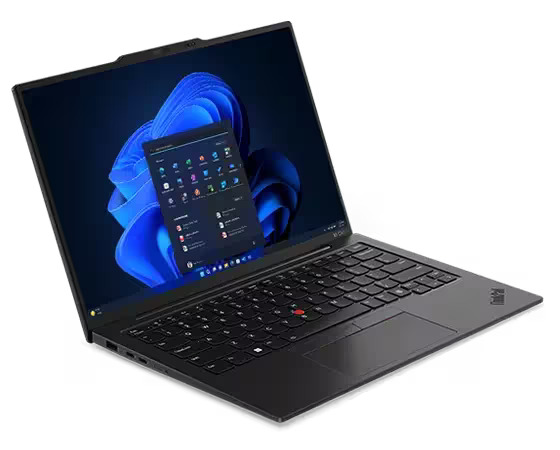
In terms of technical specifications, the dimensions and body weight are the same as in the previous model. The laptop has the following dimensions: 312.8*214.75*14.96mm and weighs 1.12kg. Its MIL-STD-810H certification ensures durability, allowing it to withstand harsh environmental conditions.
On the display shell, it is observed that the notebook has a plain black colored skin-friendly coating instead of the woven texture design that was used in previous models. The new coating also provides a better feeling and feels comfortable while handling. However, it retains the iconic ThinkPad X1 branding and Lenovo nameplate, with the familiar glowing red dot on the “ThinkPad X1” logo.
The display shell has a small raised bump in the middle top (made up of metal), which integrates the network antenna. After all, the notebook supports LTE, and these antennas help ensure reliable signal transmission.
Lenovo ThinkPad X1 Carbon Gen 12 Review: Display
As a top-tier business notebook, having an OLED display is essential, and Lenovo has delivered just that with the ThinkPad X1 Carbon. The model under review offers a 14-inch 3A (anti-glare/anti-reflective/anti-smudge) OLED display with a stunning 2.8K resolution (2880*1800p) and a smooth 120Hz refresh rate. With a 16:10 aspect ratio and an impressive 89% screen-to-body ratio, this display provides ample screen real estate for productivity. Lenovo claims the display covers a 100% DCI-P3 color gamut, boasts 400nits brightness, supports a remarkable 1.07 billion colors, and holds certifications from Dolby Vision and HDR True Black 500, ensuring an exceptional viewing experience.
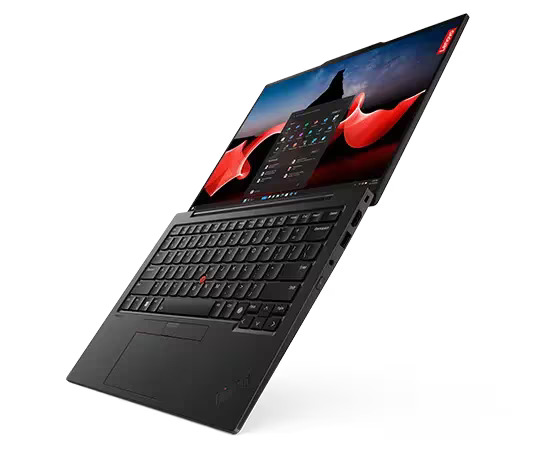
Another significant and positive factor we found in this OLED display is its minimal reflection, which is significantly different from other OLED displays. Thanks to the anti-reflective coating on the surface, reflections are effectively eliminated. Additionally, this OLED also incorporates the eye protection feature, which ensures a comfortable viewing experience. In long-term usage, we didn’t find any eye stress, which is the most common issue in using OLED Displays.
In our testing, we opted for the DisplayHDR Test application from the Microsoft Store instead of the Spyder X used previously. Upon completing the test, we found that the screen was Samsung ATNA40YK20-0. This display covers 100% sRGB, 98% AdobeRGB, and 99% DCI-P3 color gamut while the peak brightness is 500nits. It has an average delta E of 0.71 and a maximum delta E of 2.09. These findings underscore the high quality of the screen, which is suitable for both everyday office tasks and graphics editing. Notably, it also prioritizes user-eye comfort without compromising on performance.
At the top of the display, there is a bump housing essential components such as the webcam, IR sensors, LED indicators, and network antennas. The webcam hole is equipped with a full-HD resolution sensor. It includes a privacy shutter, allowing users to block the camera’s view when not in use for added privacy protection.
Lenovo ThinkPad X1 Carbon Gen 12 Screen Test Results |
|
| sRGB | 100% |
| Adobe RGB | 98% |
| DCI-P3 | 99% |
| Maximum Brightness | 500nits |
| Average Delta E | 0.71 |
Lenovo ThinkPad X1 Carbon Gen 12 Review: Keyboard
The keyboard in Carbox X1 brings several notable changes. Before discussing them, it is worth mentioning that this keyboard is a “ThinkPad TrackPoint Keyboard,” a spill-resistant keyboard with 1.5mm key travel and backlit support (only White color). A significant change is the absence of “X1” in the ThinkPad branding at the lower right, although the complete “ThinkPad X1” branding remains on the display shell. However, this doesn’t matter a lot as the full branding “ThinkPad X1” is already mentioned on the display shell.
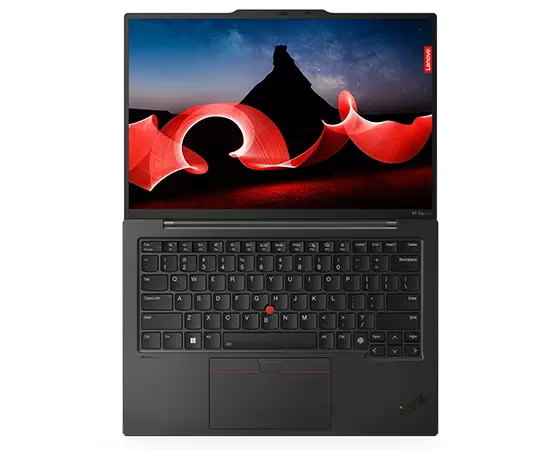
In terms of minimal changes, the Ctrl key and Fn key have swapped positions, a relief for users accustomed to traditional layouts. However, for those preferring the old setup, the BIOS allows for customizing key functions. The second change observed is the addition of a dedicated fingerprint key to the right of the Ctrl key, which enhances convenience and offers faster, more accurate recognition.
Another change is the F8 key, which allows you to change the performance mode, though it lacks the dedicated modes seen in gaming laptops. These modes are straightforward and can also be adjusted in the Battery settings. Lastly, a noteworthy addition is the functionality of the red dot key: double-clicking opens a shortcut menu, providing access to notebook settings and customizable options.
A noteworthy aspect is the keyboard’s retention of the air intake, which is crucial for optimizing heat dissipation. Additionally, the keyboard serves as the location for the speakers, enhancing sound volume and quality. With speaker openings and a waterproof membrane, the keyboard ensures clear sound output, regardless of the laptop’s position or usage, avoiding any obstruction commonly encountered with bottom-mounted speakers.
Beneath the keyboard lies a glass trackpad measuring 4.72 inches in width. Its sufficient size facilitates seamless navigation with a single swipe across the entire window. Furthermore, the trackpad also supports the dual-function TrackPoint feature, allowing users to navigate like a traditional mouse or double-click to access the TrackPoint shortcut menu. However, it is observed that the touchpad should be improved. Being a high-end notebook, the ThinkPad X1 still comes with a standard TouchPad. While the TouchPad, with its three-button buttons and a small red dot on the X1 Carbon, is still better than other competitor brands, integrating a ForcePad pressure-sensitive touch panel could make the user experience even further. After all, the notebook has a considerable price tag of $2000.
Lenovo ThinkPad X1 Carbon Gen 12: Ports
In most of the business-segment notebooks, a common issue is sacrificing port diversity to make the laptop’s body slimmer. However, in line with its predecessors, the X1 Carbon maintains a robust selection of ports essential for daily office use.
On the left side, you’ll find a USB Type-A 3.2 Gen1 port, along with a pair of USB Type-C Thunderbolt 4 ports, followed by a SIM Card slot. Meanwhile, the right side houses the Power Button, a 3.5mm headphone jack, another USB Type-A 3.2 Gen1 port, and an HDMI 2.1 port.
With this array of ports, including all the essentials, there’s almost no need for office users to carry additional USB docks or accessories, ensuring seamless connectivity for everyday tasks.
Lenovo ThinkPad X1 Carbon Gen 12: Battery and Charging
In previous generations of the X1 Carbon, battery standby timing was a common problem. However, in the 12th Generation, Lenovo has reportedly solved this problem by optimizing power distribution. The X1 Carbon Gen 12 features a 57WHr battery, which is a 4875mAh Li-polymer battery.
To test the battery’s endurance, we used the PCMark 10, turning off all network connections and setting the brightness to 50%. Under these conditions, we achieved a decent battery backup of 10 hours and 52 minutes. When connected to the internet and performing daily office tasks, a battery life of around 6 hours can be expected.
For charging, Lenovo provides a 65W Type-C charger, which can charge 80% of the battery in just one hour, as per the official claim. If you encounter battery issues during heavy usage, you can quickly recharge your laptop during a lunch break.
Lenovo ThinkPad X1 Carbon Gen 12: RAM and SSD
The X1 Carbon Gen 12 offers two RAM capacity options: 16GB and 32 GB. The model we are reviewing is the top-of-the-line variant, featuring a hefty 32GB of LPDDR5x RAM (6400MHz frequency). However, it’s important to note that the RAM is soldered onto the motherboard, meaning it cannot be upgraded.
For RAM benchmark testing, we utilized the AIDA64. The results were quite decent, with read speeds of 75,665 MB/s, write speeds of 70,792 MB/s, and copy speeds of 82,562 MB/s, surpassing those of other LPDDR5x RAM-equipped business segment notebooks.
In terms of storage, this model features a 2TB M.2 PCIe Gen4 SSD manufactured by Samsung. The model only has a single SSD slot, indicating that upgrading storage would require replacing the current SSD. However, it’s worth noting that the SSD is covered with a heat sink, effectively helping in reducing the notebook’s temperature.
For doing the storage benchmarking, we used the CrystalDiskMark, revealing impressive results: sequential read speeds of 7,056 MB/s, sequential write speeds of 4,989 MB/s, 4K random read speeds of 65 MB/s, and 4K random write speeds of 105 MB/s. These benchmark scores underscore the exceptional performance of the SSD.
Lenovo ThinkPad X1 Carbon Gen 12: CPU and its Benchmarks
The Intel Core Ultra7 155H CPU powers the all-new Gen 12 of X1 Carbon and is the only available CPU option. Before discussing the specs, it is worth mentioning that Intel’s Core Ultra series is specially designed for premium, thin, and powerful laptops, featuring 3D performance hybrid architecture and advanced AI capabilities, and it is available with built-in Intel Arc series GPU.
In terms of specs, the Intel Core Ultra7 155H is based on the 7nm manufacturing process. It features a total of 16 cores, including 6 Performance Cores (max 4.8GHz Turbo frequency), 8 Energy Efficient Cores (max 3.8GHz Turbo Frequency), and 2 Low Power Efficient-core (max 2.5GHz Turbo Frequency). In addition, the number of threads is 22; the max TDP is 28W. In addition, the CPU is also integrated with Intel Arc Graphics. Following are some benchmark tests of CPU:
CPU-Z: 675 Points on Single-Core and 6,884 Points on Multi-Core
Cinebench R20: 681 on Single-Core and 5,248 on Multi-Core
Cinebench R23: 1,797 on Single-Core and 13,451 on Multi-Core
Cinebench R24: 102 on Single-Core and 736 on Multi-Core
Lenovo ThinkPad X1 Carbon Gen 12: Heat Dissipation and Stress Testing
Starting from the bottom side of the notebook, it has a relatively simple design featuring heat ventilation openings. To dismantle the notebook, we unscrewed the four screws on the bottom. Then, we removed the bottom cover, which revealed the heat dissipation system inside the X1 Carbon, which includes the same two cooling fans and one heat pipe as the previous generation.
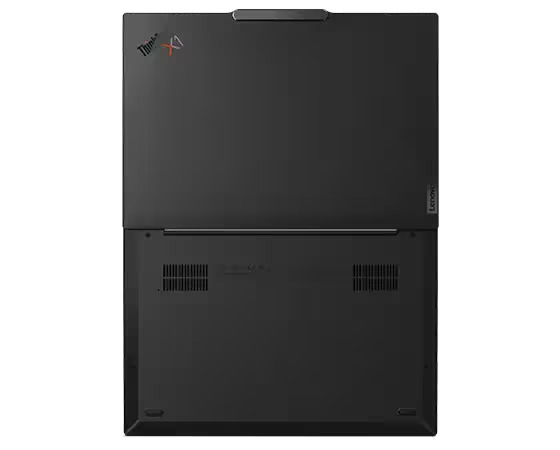
For CPU stress testing, we used the AIDA64 FPU application. The performance mode was set to optimal performance before beginning the test. After running the test for approximately 25 minutes, the CPU’s power consumption stabilized at 40W, with an average CPU power consumption of 36W and an average total system power consumption of 59W. At a peak power consumption of around 90W, the CPU’s temperature reached 81°C.
It’s worth noting that the average power consumption was significantly affected when the screen was turned off during stress testing. Despite running at maximum speed during the peak of testing, the measured noise from the cooling fans was only 44dB, which is quite impressive compared to other high-performance notebooks. During regular daily office use, we can say that the fan noise would be virtually inaudible. Overall, these results demonstrate the effectiveness of the heat dissipation system in the ThinkPad X1 Carbon Gen 12.
Also Read: Lenovo ThinkBook 14 G6+ Review (Intel Core Ultra 5-125H)
Summary:
As we know, the Lenovo ThinkPad X1 Carbon Gen 12 lies in the flagship-level business notebook segment; it offers a comprehensive set of features designed to meet the demanding requirements of professionals. With its slim design, exceptional durability, potent performance, and top-notch display, it can easily cater to all the needs of modern business users.
Powered by the latest Intel Core Ultra7 155H CPU, 32GB of LPDDR5x RAM, and a 2TB M.2 PCIe Gen4 SSD, the X1 Carbon Gen 12 delivers a strong performance and ample storage for multitasking and demanding workloads. The 14-inch OLED display with a 2.8K resolution and Dolby Vision certification ensures a visually immersive experience. At the same time, the array of ports, including Thunderbolt 4, HDMI 2.1, and USB Type-A, offers seamless connectivity for various peripherals.
Despite its high-end specifications, the X1 Carbon Gen 12 maintains efficient heat dissipation, ensuring optimal performance even under heavy workloads. With a battery backup of up to 11 hours (mentioned in benchmarks) and fast charging capabilities, users can stay productive throughout the day without worrying about running out of power.
The model we have reviewed is priced at $2350 and offers exceptional value for its flagship features and performance. However, if you are tight on budget, a lower-priced configuration with 16GB of RAM and a 512GB SSD is available for $2050, providing a more affordable option without compromising too much on performance. Overall, the Lenovo ThinkPad X1 Carbon Gen 12 is a compelling choice for professionals seeking a premium business notebook that delivers on performance, durability, and versatility.


